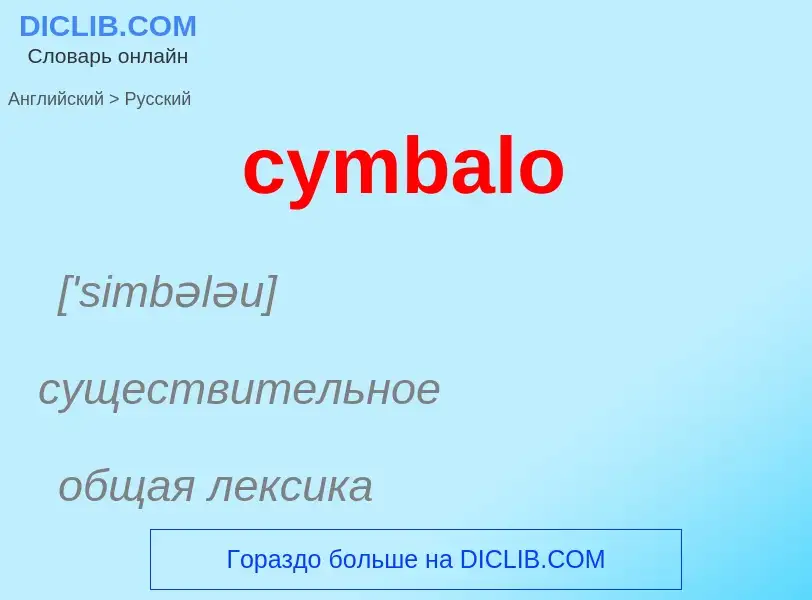Translation and analysis of words by ChatGPT artificial intelligence
On this page you can get a detailed analysis of a word or phrase, produced by the best artificial intelligence technology to date:
- how the word is used
- frequency of use
- it is used more often in oral or written speech
- word translation options
- usage examples (several phrases with translation)
- etymology
cymbalo - translation to russian
['simbələu]
существительное
общая лексика
цимбалы
['simbələm]
существительное
музыка
венгерские цимбалы
Definition
Wikipedia
.jpg?width=120)
The cimbalom, cimbal (; Hungarian: [ˈt͡simbɒlom]) or concert cimbalom is a type of chordophone composed of a large, trapezoidal box on legs with metal strings stretched across its top and a damping pedal underneath. It was designed and created by V. Josef Schunda in 1874 in Budapest, based on his modifications to the existing Hammered dulcimer instruments which were already present in Central and Eastern Europe.
Today the instrument is mainly played in Hungary, Slovakia, Moravia, Romania, Moldova, and Ukraine.
The cimbalom is typically played by striking two sticks, often with cotton-wound tips, against the strings which are on the top of the instrument. The steel treble strings are arranged in groups of 4 and are tuned in unison. The bass strings which are over-spun with copper, are arranged in groups of 3 and are also tuned in unison. The Hornbostel–Sachs musical instrument classification system registers the cimbalom with the number 314.122-4,5.
The name “cimbalom” is also sometimes used to describe other types of dulcimers, which may have different tuning systems and which may lack the dampers and heavy construction of the concert instrument. In other languages, the words for those other instruments and the concert cimbalom may be similar as well (such as țambal in Romanian or цимбали [tsymbaly] in Ukrainian).

.jpg?width=200)
![Old ''cimbule'' exhibited in the [[Međimurje County Museum]] in [[Čakovec]], [[northern Croatia]] Old ''cimbule'' exhibited in the [[Međimurje County Museum]] in [[Čakovec]], [[northern Croatia]]](https://commons.wikimedia.org/wiki/Special:FilePath/Cimbule u Muzeju Međimurja.jpg?width=200)


